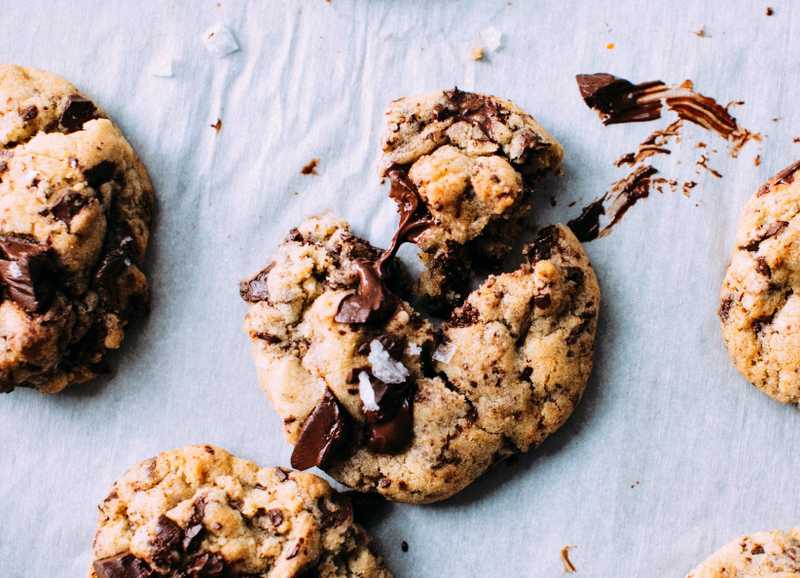If you’ve ever cooked with cannabis, you’ve probably noticed that fats like butter or coconut oil are common ingredients in cannabis edibles recipes. But do you know why?
Cannabis and fat make a great combination. And without fat, you won’t get the most out of your edible marijuana creations. Here’s the science behind this perfect pairing, the best fats to use when cooking with cannabis, and why you should never go low-fat with your edible recipes.
The Science Behind Cooking With Cannabis & Fat
It doesn’t take much to get medicinal effects from inhaled cannabis. Just heat the cannabis and inhale, and within minutes you’ll experience its effects. But with edibles it can be more complicated. When it comes to cooking with cannabis, you need to be intentional to make sure you get the desired effects.
Part of this is because cannabis’s active ingredients like tetrahydrocannabinol (THC) and cannabidiol (CBD) are fat-soluble rather than water-soluble. While many vitamins and nutrients are water-soluble, meaning they dissolve and become bioavailable in water, cannabis’s chemicals are hydrophobic, meaning they can’t dissolve in water. Instead, these chemicals are lipophiles, meaning they can only be dissolved and made available to your body in fat.
Research shows that cannabis taken with fat is far more potent and bioavailable than when taken without it. In fact, studies show that the bioavailability of THC increases more than two-and-a-half times when taken with fat than when taken without it.
This is a big difference in your medicinal results. Just imagine having to buy and consume more than double the amount of cannabis for the same effects.
Without the fat, eating cannabis doesn’t have much of an effect. Your body simply can’t process the chemicals if it doesn’t mix with fat first. It will pass through your digestive tract without absorbing much. But, infuse the cannabis into a fatty substance like butter or coconut oil, and suddenly its active chemicals are available and can make their way into the bloodstream.
RELATED: DOES CANNABIS AFFECT YOU DIFFERENTLY WHEN YOU EAT IT?
The body’s lymphatic system (which is essential in immune function) also plays a role in this complex picture. When someone eats a high-fat cannabis edible or has a high-fat meal while eating cannabis, [the fats stimulate activity in the intestinal lymphatic system](https://www.ncbi.nlm.nih.gov/pmc/articles/PMC5674070/), which helps transport the active ingredients in cannabis to the bloodstream, and make it available to the whole body.
For both of these reasons, edible recipes commonly rely on cannabis-infused butters or oils as their base.
The Best Fat for Cannabis Edibles Is Coconut Oil
Of course, not all fats are equal when it comes to cooking with cannabis. Some offer better cannabinoid absorption than others do.
You may have noticed that butter is one of the most commonly used options. This may be because of its flavor or cooking properties, but it also has a reputation for providing a more potent experience than plant-based alternatives like olive, sesame or avocado oil. As an animal fat product, butter is a saturated fat, while the aforementioned alternatives are all unsaturated.
While some think that saturated fats aren’t very healthy, when it comes cannabis absorption, saturated fats are best. The higher the saturation levels, the better the fat is at absorbing cannabis’s active ingredients.
While this makes butter and other animal fats a great choice for infused treats, the fat that ranks number one for cannabis absorption isn’t animal fat—it’s super-healthy and plant-based coconut oil. This oil, unlike olive, sesame and avocado oils, is highly saturated. Its 90% fat saturation dwarfs the 15% fat saturation that we see in olive oil.
But don’t worry. Despite being a saturated fat, coconut oil is considered a healthier alternative to saturated animal fats. This is because it’s made from medium-chain fatty acids (MCFA), which the body can easily break down and metabolize.
Other kinds of saturated fats, like those found in butter and other animal fats, are known as long-chain fatty acids (LCFA), which can only be broken down by a special enzyme.
You can still use any of these fats when making cannabis edibles. So if you prefer a particular fat for health or flavor reasons, go ahead and use it. But those edibles made with coconut oil are likely to be the most potent ones you can make.
If you want to get the most out of your cannabis edibles, stick to coconut oil or other highly saturated fats when you cook. In terms of efficiency and potency, it can’t be beat.
Photo credit: Jennifer Pallian
